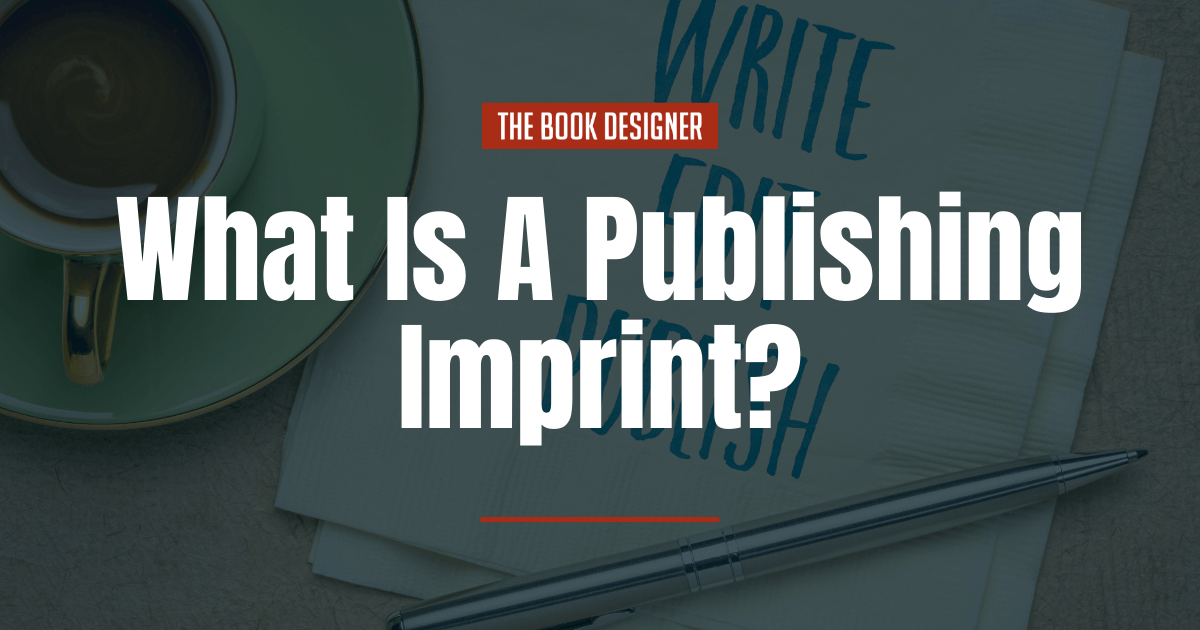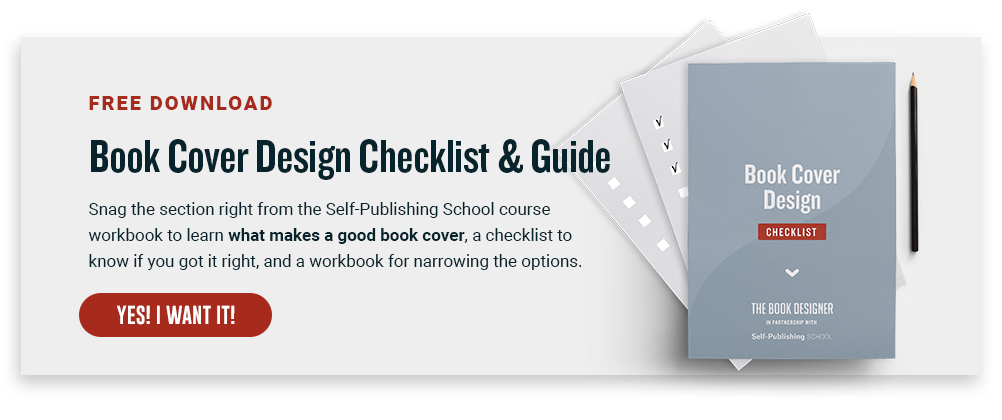So you wrote a book, and now you want to publish it. First of all, congratulations, as this is a huge accomplishment! Having the desire to write a book is common, but putting in the hours until you create a final product takes a different level of commitment.
But you did so, and now comes the question, if you want to publish traditionally, what’s the difference between a publisher and a publishing imprint?
If you look at the Big 4 New York Publishers (Penguin Random House, HarperCollins, Hachette Book Group, Macmillan), you’ve likely noticed the imprints under them. For instance, Del Rey is an imprint of Penguin Random House. Harper Business is an imprint of HarperCollins.
So what is a publishing imprint, and what does this have to do with your book? In this article, we discuss:
Let’s start with a definition and explanation, so you have a grasp of each before we move forward.
What Is a Publishing Imprint?
A publishing imprint is a brand name used to publish a book. But that can differ from the actual company that published the book. For instance, HarperCollins has a myriad of imprints and use the imprints to publish different genres and market them accordingly. Think of a publisher as an umbrella over which all the imprints gather.
Another example might help here: Let’s say the publishing house is Proctor & Gamble. They’re the big umbrella company.
But within Proctor & Gamble (or within that publishing house), you have an array of other brands (or other publishing imprints).
- Gillette: razors
- Luvs: baby diapers
- Downey: fabric softener
- Tide: laundry detergent
- Crest: toothpaste
- …and the list goes on…
The publishing house is the overarching title (or name) that encompasses the smaller-scale imprints (specific for genres or audiences). With that in mind, let’s get into the history and background of imprints.
History and Background
The Big Five (now the Big Four with Penguin Random House’s acquisition of Simon & Schuster) publishing houses started around the turn of the 20th century. At that time, many factors began to shift:
- Publishing houses merged
- Trade paperbacks became more popular
- New ways to sell books came into being
- Chain bookstores went global
With merges came publishing imprints. Penguin Random House boasts imprints such as:
- Knopf Doubleday: A publishing imprint with imprints all its own
- Crown Publishing: Focuses on bestselling fiction as well as narrative nonfiction
- Viking Press: An imprint dedicated to all genres of both fiction and nonfiction
With the Big 5 turning into the Big 4, it shouldn’t be surprising just how many imprints there are to date.
Examples Of Different Imprints
There are a multitude of publishing imprints and getting your start in the traditional publishing world can come down to which imprint offers you a contract. In the traditional publishing sphere, it’s imperative to pitch your work to the correct imprint, or risk a rejection.
Let’s say you pitch to Crown, an imprint of Penguin Random House. Crown is known for specializing in bestselling fiction and narrative nonfiction in categories including biography, science, history, politics, and similar categories. If you wrote a biography about a historical world leader aimed at adults, you pitched the right publishing imprint.
However, let’s say you want to publish with HarperCollins and pitch to their imprint, AvonBooks. This imprint focuses its publishing energy on various romance genres. But you wrote a biography. Chances are high that you’ll get a rejection letter, not necessarily due to your writing (it could be great!) but because this particular imprint does not publish your genre.
Amulet Books is an imprint of Abrams Publishing. Amulet Books’ nonfiction focus is on young adult and middle-grade. So while your biography may fit the nonfiction genre, it does not belong in the young adult or middle grade nonfiction genre.
With so many imprints to choose from, it may seem confusing to know where to start. Don’t let the plethora of options overwhelm you. Instead, celebrate just how many avenues are available to you for publishing your book.
If one publishing imprint rejects your manuscript, another may be a better fit. There are so many options when it comes to publishing your book with an imprint. Take your time, do your research, and then pitch to various publishers.
Checklist When Pitching Imprints
You now understand what an imprint is and why they came into existence. You have your completed manuscript (or book proposal in the case of many nonfiction genres) and you’re ready to pitch. Now what? Follow this basic checklist when pitching to heighten your chances of receiving an offer:
- Follow the imprint guidelines exactly
- Make sure the imprint publishes the genre you pitch
- Research their previous works to understand how yours fits
- Have a firm grasp on current publishing trends
If an imprint does not accept unsolicited queries, you can still pitch them but you will have a few extra steps:
- Sign with an agent who represents your genre
- Network at writing conferences
- You may meet an acquiring editor who invites you to pitch
- You may meet other professionals who can get you in the door
The above is a brief guide to pitching. Make sure you follow instructions exactly, follow industry etiquette, and present yourself well. First impressions are important to get right, especially when it comes to publishing your first manuscript.
Moving Forward
Imprints are a great way to get your foot in the door at a larger publishing house. Once you pitch to a publishing imprint and receive an offer, celebrate, then get back to work.
Publishing is often a hurry up and wait industry, but there is always work to do while you wait for others to complete their tasks.
If you receive an offer, get busy working on:
- Determine your overall advertising plan
- Brainstorm you marketing plan
- Engaging with your social media following
- Booking speaking engagements
- Creating your launch team
- Working on that next book!
Whether you choose to traditionally publish with a publishing imprint or self-publish on your own, marketing is essential.
When you publish with a smaller house or publishing imprint, they likely focus on fewer genres. However, that means they can also spend more time on those genres. If you write historical fiction and publish with an imprint who specializes in historical fiction, they are positioned better to help you with the marketing of your book.
Keep these various points in mind as you write your book, choose the right imprints to pitch, publish, and start that next book.
Creating Your Own Publishing Imprint
If you’re an author who likes to write in more than one genre, and you self-publish your books, you may want to consider creating multiple imprints for your work. Since imprints are like brands under a single publisher name, you won’t have to set up entirely separate business entities for each one, and can even use a single block of ISBNs to publish under multiple imprints (as long as the publisher is the same for all of them).
One thing to be aware of, however, is that adding an imprint to your publishing company might not always be straightforward and can present some hiccups along the way.
For example, Joel Friedlander, the original author of The Book Designer, had multiple imprints under his publishing company, one of which was called Marin Bookworks. He ran into some trouble, though, when he went to publish The Self-Publisher’s Ultimate Resource Guide a few years ago via Createspace (which has since been absorbed into Amazon KDP).
When Joel went to enter the publishing imprint name, Createspace rejected his book since it didn’t match the ISBN he also provided (an important security measure, since ISBNs can only be used once). Now he had a dilemma: at the time, there was no way to add his imprint to Bowker himself. He ended up emailing Bowker’s customer service to find a solution, and this is what they had to say about imprints:
“What is an Imprint? A trade name used by a publisher to identify a line of books or a publishing arm within the publishing organization. … An imprint is distinguished from a corporate name in that it does not represent an entity with a corporate life of its own.”
In the end, Joel was given the email address to request having his imprint added to his publisher account, which was done within 24 hours and Createspace approved his book soon after. Bowker has since added the functionality for publishers to add their own imprints via their accounts. Just be sure that if you’re adding a new title under an imprint you haven’t used before that you set this up before submitting your book to printers or distribution channels to avoid the same kind of hassles and delays.
The writing journey is so fun because there are so many ways to succeed. Do your homework, write the best book you know how, and then reach out to those imprints or create your own!




